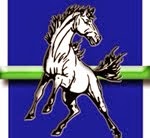In his first session (seen here), he communicated with students and answered their questions. He even panned the webcam to show them what it looks like outside of his window! Much to their surprise there was NO SNOW yet! Kelly answered questions from curious students and gave them and idea of what life is like on the station and what the environment is like.
I am currently a PhD student at the University of Wisconsin. Our project in Antarctica is on climate change. Now that's a broad topic; the focus of this study is to set up several climate and soil monitoring stations at different latitudes throughout the Antarctic region. Several other Portuguese and Spanish teams have set up stations in locations farther to the north around King George Island and Deception Island. On this trip down we will set up one climate station near the American Palmer Station on Anvers Island, and another near Braybant Island.. These monitoring stations will be recording air temp, humidity, wind speed and direction, solar radiation, rainfall, soil temperature, and electrical conductivity of the soil (which indicates the salinity of the ground). We will record this data for 2+ years
The second part of the study Kelly is involved in is looking at permafrost depths and duration throughout the year. Permafrost is the permanently frozen parts of the ground. During the warmer months the upper few centimeters melts and the lower areas remain frozen. Kelly and the others stationed there are drilling several holes to monitor the temperatures at several depths to see how long this melted layer lasts and how deep it goes. Deeper or longer indicate longer higher temperatures.
I just pulled into Palmer Station the other day, so we are still being briefed today, later this afternoon they are going to brief us on how to correctly drive the Zodiac boats through heavy waves and slushy/icy waters.
Eventually the team wants to equate this to a greater release of CO2 into the atmosphere (organisims live in the melted layer so if it becomes larger or lasts longer then they can remain active longer and theses organisms consume carbon in the ground and release it as CO2).
When I went to Chile I traveled around Santiago and Valaspasia and got to see some good sites. While there I met a bunch of really fun people from France, Brazil, Canada, US and Britain. I also traveled to Peru and got to see Cuzco (the ancient Incan capitol), Machu Picchu (which was as good as they say it is), Nazca (and got to fly over the lines) and Ica (where there were sand dunes as tall as mountains). Met many good people there too. The people of South America are pretty nice and easy to talk to.
Kelly finished his undergraduate studies at the University of Iowa in 2008 with Honors - Bachelors of Science degree in Geo-science, a Bachelor of Science degree in Anthropology, and a minor in History. He is in his final year of his Masters working on Soils and Forestry at the UW Madison. At the same time he is in the first year of PhD on Soils of the Antarctic also at the UW Madison. (Both are part of the Soil Science degree).
I'm glad that everyone in Belmond is taking an interest in my travels. I hope that by conversing with Mrs. Mallen's group I can get some kids excited about scientific work.
Kelly Wilhelm










